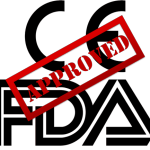The “regulatory affairs” section comprises over 200 tasks that need to be completed during the development and approval of medical devices.
Here, you will find an overview of the most essential content so that you can get your device approved quickly.
Content
On this page, you will find articles on the following topics:
- What regulatory affairs is
- Regulatory requirements
- Authorization and documentation
- Authorities, institutions, and associations
- Further topics of regulatory affairs
1. What regulatory affairs is
Regulatory affairs comprises the processes and activities that ensure that medical devices meet the regulatory requirements of the countries where they are sold. This includes
- obtaining the necessary approvals from the regulatory authorities,
- compliance with applicable regulations and standards, and
- maintaining conformity throughout the entire product life cycle until decommissioning.
The tasks of regulatory affairs also include monitoring changes to regulations and standards and communicating these changes to stakeholders within the company to ensure continuous compliance.
Regulatory affairs thus plays a crucial role in ensuring that medical devices are safe, effective, and comply with legal requirements.
Further information
Refer also to the article on regulatory affairs managers’ tasks, competencies, and earning potential. This includes the task of developing a regulatory strategy.
2. Regulatory requirements
a) Germany
| Laws |
Medical Devices Law (no longer valid)
Medical Devices Implementation Act MPDG |
| National regulations |
Medical Device Operator Ordinance (Medizinprodukte-Betreiberverordnung – MPBetreibV)
Medical Device User Notification and Information Ordinance (Medizinprodukte-Anwendermelde- und Informationsverordnung – MPAMIV) |
b) Europe
c) USA
d) Other markets
3. Approval and documentation
a) Approval
Find more information on international approval
b) Qualification and classification (How should my device be classified?)
c) Technical documentation (What do I need to document for each device?)
d) Quality management (What should your company fulfill?)
Quality management is not usually the responsibility of regulatory affairs. Nevertheless, we have listed some important articles for you.
e) Regulatory Roles
There are several expert articles on regulatory roles:
4. Authorities, institutions, and associations
a) Germany
b) Europe
c) International
| IMDRF: International Medical Device Regulators Forum |
5. Regulatory affairs: Further topics
The tasks of Regulatory Affairs also include finding and eliminating deviations and non-conformities. The (emergency) elimination is called remediation.
Note the advantages and disadvantages of Regulatory Information Management Systems (RIMS) and their role in manufacturers’ digital transformation.
Part of the tasks of regulatory affairs is regulatory intelligence.
Do you need support?
Do you still have questions, for example, about the approval of your devices? Then, take advantage of our free micro-consulting service.
If you would like support in developing and “approving” your medical devices in compliance with the law, contact us right away. The Johner Institute team will be happy to help!
Regulatory affairs managers take care of the approval of medical devices. In this article, you will learn, Update: Impact of the digital transformation on the tasks of regulatory affairs managers added!
Details
ISO 19011 is the international guideline for auditing management systems. Therefore, your notified body considers ISO 19011 state-of-the-art when it checks during your ISO 13485 certification audit whether you are conducting your internal and supplier audits effectively. Consequently, those responsible for quality management, in particular, should be familiar with and consider ISO 19011. This article…
Details
C5 certificates are relevant for service providers and, where applicable, for medical device manufacturers. The German Digital Act (DigiG), which came into force at the beginning of 2024, redefines the requirements for cloud services in the healthcare sector. This article explains the most important aspects of C5 certification for medical device manufacturers and service providers…
Details
Document control is a documented procedure that specifies how documents are created, reviewed, approved, labeled, distributed, and updated. Organizations certified according to ISO 9001 or ISO 13485 are obliged to document control.
Details
This article examines the AI Act’s applicability to manufacturers of medical devices and IVD that do not place AI-based devices on the market. Among other things, it answers the question of whether a manufacturer must comply with the AI Act if he uses ChatGPT or develops an AI system that classifies customer feedback for his…
Details
Most manufacturers use harmonized standards to demonstrate the conformity of their devices with the general safety and performance requirements. This also applies to medical device manufacturers, for example.
Regulation (EU) 2025/327 on the European Health Data Space (EHDS for short) is another European regulation that may affect medical device and IVD manufacturers. This article explains what this regulation requires and what these manufacturers have to do by when, as well as the possible advantages of the EHDS and the EHDS Regulation.
Details
Neither the MPG nor the MDR contain regulations on product liability, i.e., manufacturers’ liability for harm caused by defective devices. However, manufacturers should be aware that a lot of legal regulations entitle injured persons to claim compensation if a defective medical device causes harm to a patient, user, or third party. Liability may result, for example,…
Details
Anytime you want to launch a medical device on the market, you quickly come to the question of which legal regulations you have to comply with. This article will give you answers and present the seven steps to quickly place your devices on the market in compliance with the law.
Details
Switzerland is important both as a manufacturing location and as a market for medical device manufacturers who are based outside Switzerland. However, since May 26, 2021 (for medical devices) and May 26, 2022 (for in vitro diagnostic devices | IVD medical devices), manufacturers from Switzerland as well as manufacturers from other markets (e.g., the EU)…
Details
